An Island of Legend and Authenticity
Dubrovnik owes some of its historical identity to an islet in its closest vicinity, that is, to Lokrum, clad in fit dark-green vegetation, its name reminding of the Roman 'acrumen', at sole 680 metres from the City's port. Lokrum is a historical location, with intertwined legends and real diplomatic and historic events, with many historical personalities and often flaming interests of the town as their protagonists.

Lokrum Island with BLUE cave and panoramic view of Old town
Experience the best of Dubrovnik from the sea with the unforgettable speedboat tour to Lokrum Island and the famous Blue Cave. Cruise along the stunning Adriatic coastline, marvel at Lokrum’s dramatic cliffs, before enjoying two hours of free time to explore the island’s botanical gardens, historic ruins, and hidden gems. Dive into the magical Blue Cave, a must-see natural wonder, and snorkel in crystal-clear waters teeming with marine life - all gear is provided on the boat! Modern, comfortable speedboats are captained by friendly, local skippers, ensuring a safe and exciting ride.
Visiting Lokrum Island
Lokrum Island lies just off Dubrovnik’s Old Town, about 600-700 meters from the city walls, and is reached by an official passenger ferry from the Old City harbor. The boat ride takes around 10-15 minutes each way and operates only during the main tourist season.
During the season, ferries usually depart every 30 minutes from the Old Town harbor to Portoč Bay on Lokrum and back. Departures can start in the morning and run until early evening, but the exact timetable changes by month and weather conditions. In case of strong wind or rough sea, the boat may not operate at all. Always check the current day’s schedule at the ticket kiosk in the Old Town harbor before you buy your ticket.
Return tickets include entrance to the Lokrum nature reserve. Official prices are:
- Adults: €27 return
- Children 5-18: €5 return
- Children under 5: free
Tickets are sold at the Lokrum Reserve sales point near the Old Town harbor and at the pier by the boat. They are not sold on board. Lokrum is a protected nature reserve, so overnight stays on the island are not allowed. Make sure you plan your visit so that you are back at the pier in time for one of the last boats, which usually run in the early evening (often around 18:00-19:00 in high season, but this can vary).
If you are using the city sightseeing card, consider the Dubrovnik Pass. With the 3-Day Dubrovnik Pass you currently get about 20% off the Lokrum ferry ticket, and with the 7-Day pass about 30% off. To claim the discount, show your pass when buying ferry tickets.
Many visitors combine the ferry with other activities in Dubrovnik or plan Lokrum as part of a relaxed day of things to do in Dubrovnik and nearby day trips from Dubrovnik.
One of the most popular activities in Dubrovnik is visiting Island Lokrum by joining a sea kayaking tour
Lokrum Ferry Timetable
The Lokrum boat operates only during the main tourist season and the timetable changes by month. The first boats leave the Old Town harbor in the morning, with departures roughly every 30 minutes throughout the day. The last return boat from Lokrum is usually in the early evening, often around 18:00-19:00 in peak season, but this can vary with weather and demand.
The Lokrum ferry does not run in rough sea or strong wind, and services may be reduced at the start or end of the season. Always check the exact day’s schedule at the Lokrum ticket kiosk in the Old Town harbor or our Dubrovnik Online website, before buying your ticket, as these are reliable source for current departure times.
For planning, allow enough time to explore the island and return well before the final boat. There are no overnight stays on Lokrum and all visitors must leave the island before the last scheduled departure.
Timetable for Ferry from Dubrovnik (Old Town Port) to Lokrum (Portoč Bay) - valid for summer 2025
| Departure from the Old Town Harbour | Return from Island Lokrum |
|---|---|
| 09:00 | - |
| 10:00 | 10:15 |
| 10:30 | 10:45 |
| 11:00 | 11:15 |
| 11:30 | 11:45 |
| 12:00 | 12:15 |
| 12:30 | 12:45 |
| 13:00 | 13:15 |
| 13:30 | 13:45 |
| 14:00 | 14:15 |
| 14:30 | 14:45 |
| 15:00 | 15:15 |
| 15:30 | 15:45 |
| 16:00 | 16:15 |
| 16:30 | 16:45 |
| 17:00 | 17:15 |
| 17:30 | 17:45 |
| 18:00 | 18:15 |
| Last boat | 19:00 |
In a case of bad weather conditions, the boat doesn't operate
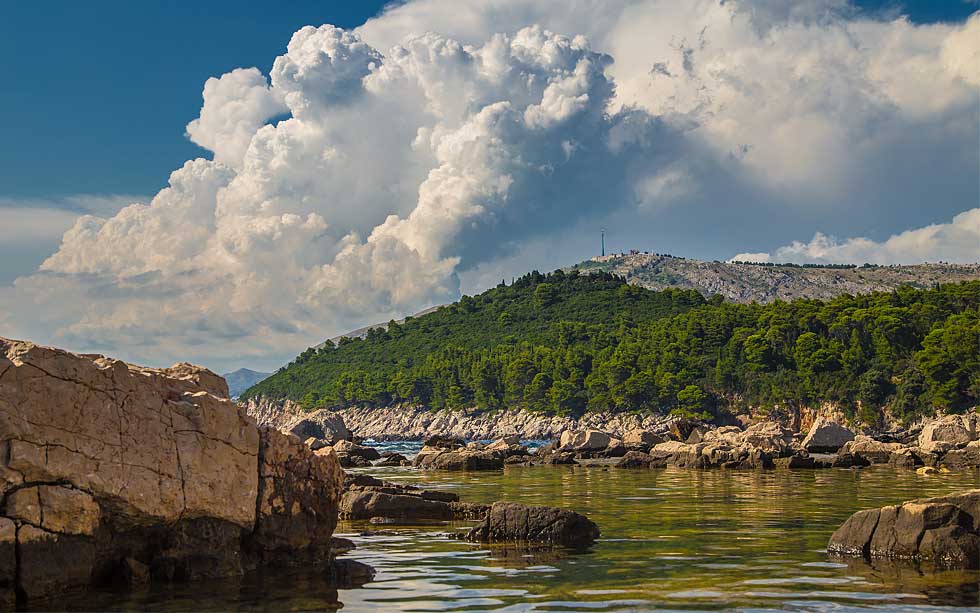
Things to See and Do on Lokrum
The Dead Sea Lake
The Dead Sea (Mrtvo More) is a small, sheltered saltwater lake close to Portoč Bay. Its calm, warm water makes it one of the easiest spots for swimming on the island, especially for families. Rocky terraces provide simple places to sit and leave your things while you swim.
Lokrum Botanical Garden
The Botanical Garden was established in the 1950s and today contains more than 800 plant species from around the world. Short marked paths run through palms, agaves and eucalyptus, offering shade and an easy walk even in summer heat.
Fort Royal
Fort Royal sits at the island’s highest point, built by the French in the early 19th century and later expanded by the Austrians. A steady uphill walk from Portoč takes about 20-30 minutes. At the top you’ll find one of the best panoramic views of Dubrovnik, the Old Town walls and the open sea.
Benedictine Monastery and Gardens
The remains of the medieval Benedictine Monastery are located in the center of the island. The cloister, nearby gardens and the shaded paths around them are among Lokrum’s most peaceful areas. Information panels explain the monastery’s history and the island’s role as a protected nature reserve.
Game of Thrones Filming Site
Lokrum appears in several scenes from the series, and the small visitor center inside the monastery features an exhibition and a replica of the Iron Throne. For more filming locations in the city, see our Game of Thrones Dubrovnik guide.
Beaches and Swimming Spots
Lokrum has no sandy beaches but offers natural rock shelves all around the island where you can swim or sunbathe. The most popular areas are near the Dead Sea lake and on the southern side of the island. There is also a designated naturist (FKK) area. For more coastal options around the city, see our beaches in Dubrovnik guide.
Walking Trails and Wildlife
Short, well-marked paths link all of Lokrum’s main sights. Many are shaded, making them a good way to explore during hot summer days. Peacocks and rabbits roam freely across the island and are one of the recognizable features of the Lokrum nature reserve.
Cafés and Facilities
Seasonal cafés and simple restaurants operate near Portoč Bay and close to the monastery area. Freshwater showers and basic changing areas are available in several spots. As Lokrum is a protected reserve, there are no cars or overnight stays on the island.
Island Lokrum map and points of interest
Lokrum is compact and easy to navigate, with clear signposts from the moment you arrive at Portoč Bay. The island’s main sights are connected by short walking paths, and most routes take only a few minutes to follow.
Lokrum Island Map Overview
From Portoč Bay, the Benedictine Monastery and the surrounding gardens are reached in just a few minutes on foot. The Dead Sea lake sits slightly west of the monastery, while the Botanical Garden is located a short distance inland. The trail to Fort Royal begins near the center of the island and leads uphill to the highest viewpoint.
The coastline paths form simple loops that allow you to explore several swimming spots without needing a detailed map. Walking times between the main points of interest are generally 5-20 minutes, and most paths are shaded or partly shaded.
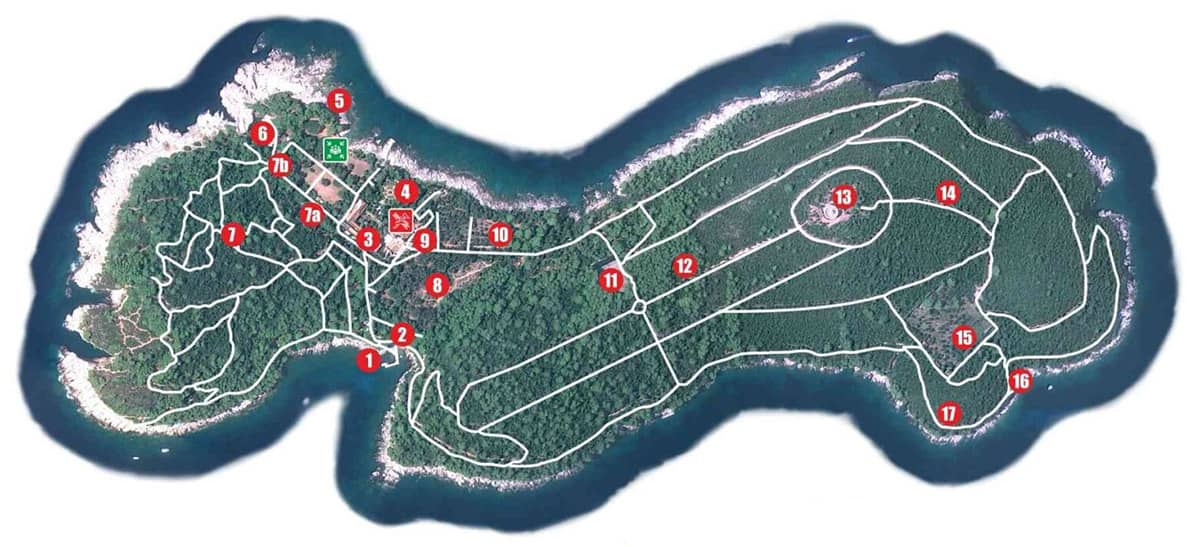
1. Port Portoč
2. Forest-ranger's house
3. Monastery complex
4. The gardens of Maximilian
5. Rocky beach
6. The Dead Sea
7. The well of Charlotte
7a. Wooden barracks
7b. Outdoor fitness
8. Botanical Garden
9. Chapel of annunciation
10. Olive growe
11. Big water reservoar
12. The path of paradise
13. Fort Royale
14. Little water reservoar
15. The Lazaret
16. Skalica
Practical Tips for Visiting Lokrum
What to Bring
Lokrum has plenty of shaded areas, but much of the coastline is exposed to the sun. Bring water, sunscreen, a hat and comfortable walking shoes, especially if you plan to walk up to Fort Royal. Rock shoes can also be useful for swimming from the natural stone terraces.
Food and Drinks
Simple cafés and restaurants operate in season near Portoč Bay and around the monastery area. They offer light meals, drinks and ice cream, but choice is limited and prices are higher than in the city. Bringing your own water and snacks is recommended, especially on hotter days.
Swimming Safety
The island has no sandy beaches and most access to the sea is from rocky shelves. The water is clear and calm in many places, but be careful when entering or exiting the sea as the rocks can be slippery. The Dead Sea lake is the most sheltered place to swim.
Nature Reserve Rules
Lokrum is a protected nature reserve. Feeding animals, smoking outside marked zones, playing loud music and flying drones are not allowed. Overnight stays are also prohibited and all visitors must leave the island before the final boat.
Facilities
Freshwater showers, basic changing spots and public toilets are available in several areas near Portoč and by the monastery. There are no cars or large shops on the island.
Accessibility
Paths around Portoč Bay and the monastery area are mostly flat and suitable for slow, easy walking, but the route to Fort Royal includes a steady uphill climb. Rocky access points along the coast make entering the sea more challenging for visitors with reduced mobility.
Avoid Missing the Last Boat
Check the return timetable as soon as you arrive and plan to be at the pier earlier than the posted time. Boats can be full near closing hours and the island closes for visitors in the evening.
How to Get to Lokrum Island
Lokrum lies just offshore from Dubrovnik’s Old Town, about 600-700 meters from the city walls. The island is reachable by the official passenger ferry that departs from the Old Town harbor; private boats and water taxis are not permitted to drop visitors anywhere on Lokrum.
To reach the ferry, walk down to the Old Town harbor on the eastern side of the city. The Lokrum ticket kiosk is located by the waterfront, a short stroll from the city walls. Boats dock at Portoč Bay on the island, which is the starting point for all main walking paths.
The ride to Lokrum takes around 10-15 minutes. Services run more frequently during the main tourist season and can be affected by weather. As timetables change during the year, always check the latest departure information at the kiosk or this Dubrovnik Online Lokrum Island page before buying your ticket.
If you are exploring the historic center first, see our Tourist Attractions and things to do in Dubrovnik for directions around the harbor area and nearby landmarks.
Map Orientation
The Old Town harbor faces Lokrum directly, and the island is visible from most parts of the city walls. Once you arrive on Lokrum at Portoč Bay, clear signposts lead to the Dead Sea lake, the Benedictine Monastery, the Botanical Garden and the trail towards Fort Royal. Paths are short, well marked and easy to follow.
Lokrum for Game of Thrones Fans
Lokrum appears in several scenes from the series, most notably as part of the city of Qarth. The Benedictine Monastery on the island was used for interior shots, and today a small exhibition inside the complex explains the filming process and Lokrum’s role in the production.
The highlight for most visitors is the replica of the Iron Throne, located in a side room of the monastery. It is free to visit and open during the same hours as the monastery area. The throne is only a short walk from Portoč Bay and is clearly signposted.
For a full overview of filming locations around the city, including King’s Landing sites and coastal viewpoints, see our Game of Thrones Dubrovnik guide.
Lokrum Island Rules and Safety
Protected Nature Reserve
Lokrum is a protected nature reserve and all visitors must follow the posted guidelines on the island. Signs around Portoč Bay and the monastery area list the main rules and explain how to enjoy the island responsibly.
No Smoking Outside Marked Areas
Smoking is strictly limited to designated zones due to the high fire risk in summer. These areas are clearly marked near the main paths and facilities.
Do Not Feed the Animals
Peacocks and rabbits roam freely on Lokrum and are one of the island’s best-known features. Feeding them is not allowed, as it disrupts their natural behavior and diet.
No Drones or Loud Music
Flying drones is prohibited anywhere on Lokrum. Loud music, portable speakers and similar disturbances are also not permitted in order to protect the calm, natural environment.
No Overnight Stays
Staying on the island after the last ferry is not allowed. Lokrum closes to visitors in the evening and all guests must return to Dubrovnik before the final boat.
Swimming and Coastal Safety
The coastline around Lokrum is rocky, with many uneven or slippery surfaces. Take care when entering or exiting the sea and use the Dead Sea lake if you prefer an easier, more sheltered spot for swimming.
Respect the Paths and Vegetation
Stick to marked trails and avoid walking through sensitive vegetation. The Botanical Garden and several forested areas contain protected plant species.
Facilities on Lokrum
Cafés and Restaurants
Lokrum has seasonal cafés and simple restaurants located near Portoč Bay and close to the Benedictine Monastery. They offer drinks, light meals and ice cream. Availability and opening hours vary through the season, and prices are generally higher than in Dubrovnik. Bringing your own water and snacks is recommended.
Toilets and Showers
Public toilets are available in several areas, including near Portoč Bay and around the monastery. Freshwater showers are located close to popular swimming spots and are free to use during the season.
Changing Areas
Basic changing spots can be found near the main swimming terraces. These are simple open-air facilities intended for quick use before or after swimming.
Shops and Services
There are no supermarkets or large shops on Lokrum. Small items such as water and snacks can be purchased at the cafés, but choice is limited. Visitors should bring anything they expect to need for the day.
No Vehicles or Accommodation
Lokrum is car-free and there are no hotels or rental properties on the island. All visitors must return to Dubrovnik on the ferry before the last departure of the day.
Payment Methods
Most cafés accept card payments, although availability can vary early or late in the season. Carrying some cash is helpful for small purchases or when card terminals are not in use.
Lokrum for Families, Couples and Nature Lovers
For Families
Lokrum is suitable for children thanks to its short walking paths, shaded areas and calm water in the Dead Sea lake. Families should bring water, snacks and sun protection, and use the main paths when moving between sights. The rocky coastline requires careful footing, so the lake is usually the best choice for swimming with younger children.
After passing the monastery there is a large meadow next to the olive groves. There is also a volleyball and a small football field. Close by you will find the area with swings, games and open space for kids, shaded and protected from the sun by cypress and pine trees.
For Couples
Couples often enjoy the quieter paths around the Benedictine Monastery, the viewpoints on the way to Fort Royal and the more secluded rocky terraces along the southern coast. Lokrum has no cars and a peaceful atmosphere, making it a good option for a relaxed half-day away from the Old Town.
For Nature Lovers
The island’s walking routes, Botanical Garden and forested interior offer plenty of opportunities for an easy nature walk. Peacocks, rabbits and several protected plant species are common throughout the island. Trails are short and well marked, allowing visitors to see most of the island in a single visit.
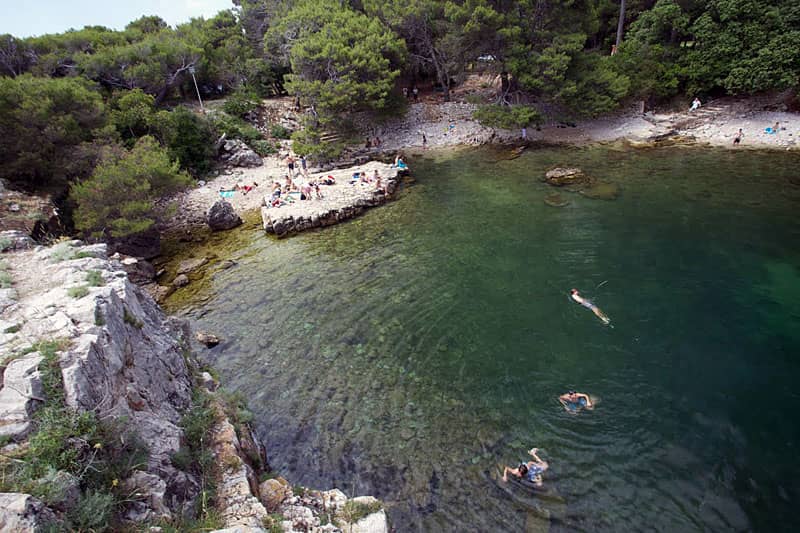
Dubrovnik Sunset Cruise by Traditional Karaka Boat
Experience Dubrovnik's UNESCO World Heritage-listed Old Town from the Adriatic Sea on a romantic sailing cruise aboard a replica of a 16th-century karaka (carrack).
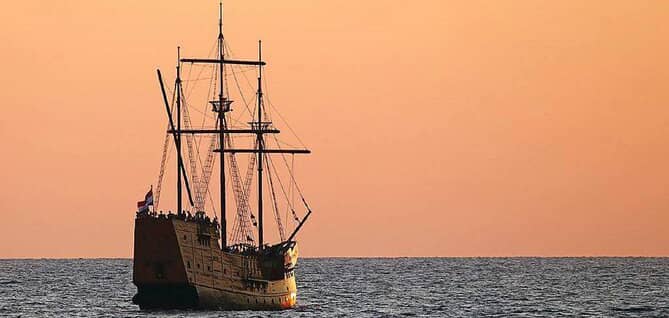
Sip a glass of sparkling wine and admire the sunset as you sail past the Old Town's red-tiled roofs and medieval walls. This sunset cruise offers a unique vantage point from a historic ship complete with wooden masts, sails, and cannons. Enjoy picturesque views of Dubrovnik, the ancient city walls, and Lokrum Island.
Best Time to Visit Lokrum
Late Spring and Early Summer
Many visitors find late spring and early summer the most comfortable time to visit Lokrum. The island is green, temperatures are warm but not extreme, and walking paths and swimming spots are less crowded than later in the season. Ferry services also run frequently during this period. Read more about the weather in Dubrovnik.
Peak Summer
July and August bring the hottest weather and the highest visitor numbers. Lokrum is still very enjoyable at this time, but shade, water and sun protection are essential. Visiting in the morning or late afternoon can make the experience more comfortable, especially for families.
Early Autumn
Early autumn often offers warm sea temperatures and calmer conditions, making it a good time for swimming and walking. The island is usually quieter than in midsummer, and many services continue to operate while the weather remains stable.
Off-Season Closures
The Lokrum ferry operates only during the main tourist season and does not run in winter or in periods of rough sea. Exact opening dates vary from year to year, so visitors should check current information locally when planning a trip outside the peak months.
How Long to Spend on Lokrum
Short Visit (2-3 Hours)
A short visit is enough to see the Dead Sea lake, explore the Benedictine Monastery area and walk a few of the nearby shaded paths. This is a good option if you want a quick break from the Old Town without staying for long.
Half-Day Visit (4-5 Hours)
Most visitors spend around half a day on Lokrum. This allows time for swimming, visiting the Dead Sea lake, walking through the Botanical Garden and exploring the monastery at a relaxed pace. It also gives enough time for a drink or light meal at one of the cafés.
Full-Day Visit
A full day is ideal if you enjoy walking or want to spend more time by the sea. You can visit all major sights, walk up to Fort Royal for panoramic views and find quieter swimming spots along the southern coast. A full-day visit works best in stable weather and when ferry departures are frequent.
No Overnight Stays
Lokrum closes to visitors in the evening and there is no accommodation on the island. Make sure to return to the pier well before the final ferry of the day.
What to Bring to Lokrum
Lokrum is easy to explore, but services on the island are limited. Bringing a few essentials will make your visit more comfortable, especially in summer.
- Water and snacks - cafés operate seasonally and prices are higher than in the city.
- Sunscreen, hat and sunglasses - much of the coastline is exposed to direct sun.
- Swimwear and a towel - useful for swimming in the Dead Sea lake or from the rocky terraces.
- Comfortable walking shoes - paths are short but include uneven surfaces.
- Rock shoes (optional) - helpful when entering the sea from rocky areas.
- Cash and a payment card - most cafés accept cards, but not always throughout the season.
- Phone or camera - for the monastery area, viewpoints and the Iron Throne room.
- Light cover-up or shirt - useful when walking between shaded and sunny areas.
Lokrum with the Dubrovnik Pass
The Lokrum ferry is not included in the Dubrovnik Pass, but the pass gives a useful discount on the return ticket. Visitors with a 3-Day Pass usually receive around 20% off the standard price, while the 7-Day Pass offers about 30% off. These discounts apply only when buying tickets at the Lokrum kiosk in the Old Town harbour.
To claim the reduction, show your valid pass at the ticket window before purchasing your ferry ticket. The discount cannot be applied on board or through any unofficial sales points. Exact savings may vary through the season, so it is best to confirm the current rate at the kiosk when you arrive.
For more information on what the pass includes in the city, see our Dubrovnik Pass guide.
Where to Eat on Lokrum
Food options on Lokrum are limited to a few seasonal cafés and simple restaurants located near Portoč Bay and around the Benedictine Monastery area. They offer drinks, light meals and ice cream, with opening hours that vary through the season.
Prices are generally higher than in Dubrovnik and the choice is modest, so many visitors bring their own snacks and water, especially on hotter days or when planning a longer stay on the island.
There are no supermarkets, late-opening venues or shops selling full meals. Outside the main tourist season, most food outlets remain closed.
Lokrum for Swimming
Clear Water and Natural Rock Terraces
Lokrum is known for its clear water and natural rocky coastline. There are no sandy beaches on the island, but many flat stone terraces provide easy places to sunbathe and leave your things while you swim. Most swimming spots are only a short walk from Portoč Bay.
The Dead Sea Lake
The Dead Sea (Mrtvo More) is the most sheltered swimming area on Lokrum. This small saltwater lake has calm, warm water and a simple entry point, making it a popular option for families and anyone looking for a relaxed swim.
Southern Coast Swimming
The southern side of Lokrum offers deeper water and some of the clearest sea around the island. The rock shelves here are wider and quieter than those near Portoč Bay, although they can be exposed to the sun throughout the day.
Naturist (FKK) Area
Lokrum has a designated naturist area located on the eastern side of the island. It consists of natural rock platforms with ladders placed in a few locations to help with sea access. The area is marked with clear signs. To find it, start at the main ferry landing and head left, following the path. You'll pass rocky swimming spots and continue up a small incline. Once over the rise, keep left, and you'll see a sign indicating the nudist beach. Read more about FKK naturist beaches and campsites in Dubrovnik and Croatia.
Swimming Safety
The sea around Lokrum is clean and generally calm, but access is almost always from rocks. Surfaces can be uneven or slippery, so take care when entering or exiting the water. Rock shoes can be helpful, especially along the southern and eastern shores.
Some historical facts about Lokrum Island
It is first mentioned in 1023, when by the gift of deed issued by Dubrovnik arch-bishop Vital and Mayor Lampredi, it was donated to Leon, a clergyman, and Peter, a Benedictine. The generous donation fruited with a Benedictine Monastery that served to the Dubrovniker's as a guardian and, often, as a spirit-level in the fine and ingenuous play of changing interests. By erecting their monastery at the southern part of the island, the Benedictines set themselves as watchful observers of common interests.
All the way up to the late 18th century, when the island was sold away, they would often warn the City about the dangers coming form the sea, either with fires from the island's hilltop, or with stubborn ringing of the bells from their church tower.
A legend has it that on his way back from the Third Crusade, in 1192, even the English king Richard the Lion-Heart found himself stranded on Lokrum after a tempest. Decisive to have an impressive church built at the spot he set his foot on first, he gave a generous donation for the purpose. Reportedly, then, in the game of various interests, the donation was passed on to the City, which used the hefty amount to enlarge and restore the cathedral. As by the legend, the King wanted the church dedicated to the Assumption of the Virgin Mary - which Dubrovnik Cathedral actually is!

Lokrum does not only excel by its unique beauty - it is a unique blend of the Mediterranean contrasts - of the green, the blueness of the sea and the whiteness of the city walls at hand. It is the guardian of the city, its reconnaisance party over the many long centuries. Battles were fought around it, its coves of Portoč and Skala anchored Venetian gallions and Austrian war ships alike, thus keeping away many a danger off the City itself, while incessantly living a life of its own, created by the industrious Benedictines on the wings of their order's simple and laconic motto: "Ora et labora" ( "pray and work" ). It is the Benedictines whom we owe the deed of turning the island into a paradise - on its slopes they grew some very special grapes and made the unique kind of white malvasia wine.
Finally, its was their own doom that has turned Lokrum into an island of legends. When in the late 18 century the impoverished Dubrovnik Republic came upon the idea of selling the island, and asked the permission for it, all with the aim of recharging its empty treasury, it created the legend about a spell that is still living. The last Benedictines were expelled from the island on January 4, 1799. The night before, they made three rounds of the island with lighted candles turned upside down, pronouncing a spell to any that would ever dare to buy their earthly abode. The legend mentions the ill fate of the three Dubrovnik aristocrats that suggested the sale of the island to the Republic's Senate, and the foundering of the Austrian brig Triton in 1859, threatening with a clash over the supremacy on Sardinia between France under Napoleon III and Austria.
The clash, however, did not happen, but the fact is that the pier at Skala saw the biggest catastrophe that ever happened on quiet water, carrying away almost hundred lives of innocent sailors. The memory on this tragedy is marked with the stone cross. The event forced out a visit by Archduke Maximilian Ferdinand, commander-in-chief of Austrian naval forces. This sensitive aesthetist fell in love with the island, oversaw the spell, and had one wing of the old monastery replaced by a summer vila for his beloved spouse Charlotte.
He visited Lokrum over eight consecutive years, without a premonition that the appointment to the king of Mexico would cost him life right after the disembark at Queretaro. His cousin, Archduke Rudolph, was of similar destiny. Himself taken by the atmosphere of the small town in the Mediterranean south of his empire, he visited Dubrovnik and, especially, Lokrum. He died under unclear circumstances at the Mayerling Castle, having shot his gorgeous mistress Maria Wetsera.
Read the whole article: The Legend of the Lokrum Curse
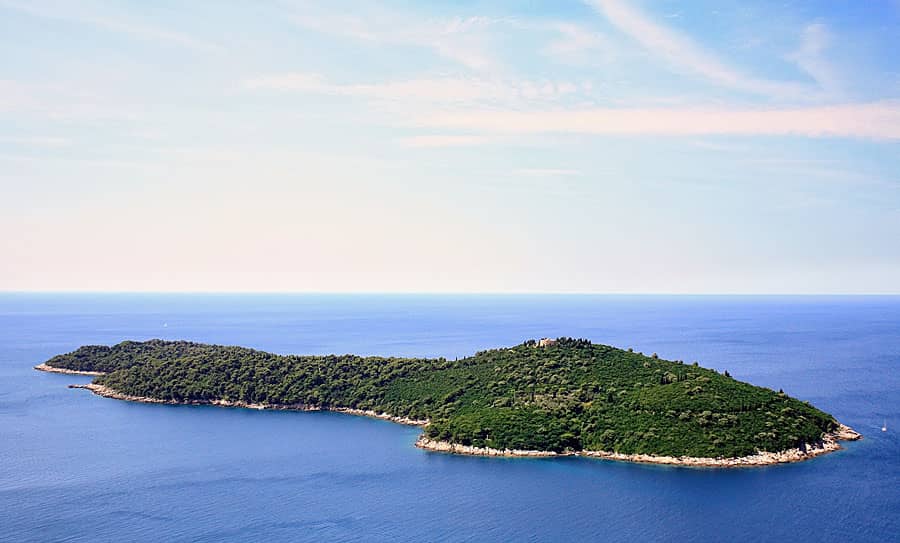
The last owner of Lokrum was The Duchess of Windischgratz, from a family related to the Habsburgs, who in 1919 sold it to the then Yugoslav government for 11 million crowns. For a number of years the island hosted a children's resting home, and when it was proclaimed natural reserve, the Benedictine spell on unfortunate ownerships, tragic dooms and bewitched walls of the old monastery, was pacified forever. However, the cloister does shelter the earthly remains of the self-proclaimed Dubrovnik Rector Damjan Juda, and the tombs and bodies of the most reputable patricians. The small Maximilian's garden was the base for the Botanical Park whose palms, exotic plants and tall pine-trees intertwine in the scenography of enchanted, genuine nature, close to the blue depths of the sea and the global voyages.
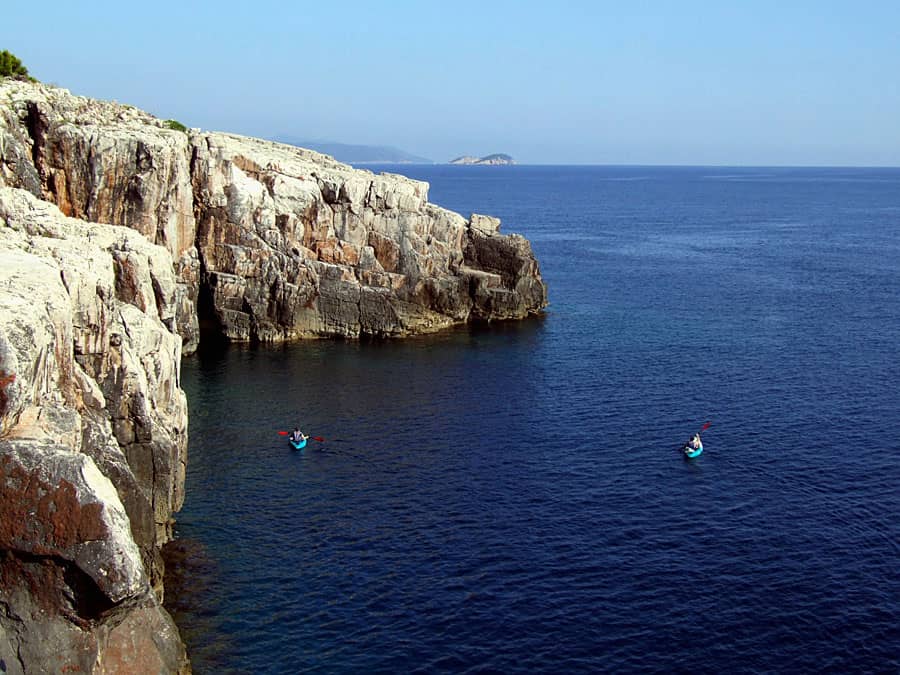
Summertime on Lokrum has since long become the property of many. A shuttle sets off from the Old Port every half hour, Lokrum being the destination of sun bathers, a paradise for lovers - too precious to belong to one single person. In its middle lies the "Dead Sea", close to the white monastery, on its top the Fort Royal, offering a close view on Dubrovnik, itself resembling a precious stamp of the past, the present and the times to come.
Source: Dubrovnik Tourist Board
Publication: Welcome to Dubrovnik
Author: Tereza Buconić Gović
Planing to visit Lokrum Island? Here is the Lokrum Island Information and Ferry Timetable from Absolute Croatia.
Lokrum Island FAQ
How do you get to Lokrum Island?
Lokrum is reached by the official passenger ferry from Dubrovnik’s Old Town harbor. The boat ride takes around 10-15 minutes and operates only during the main tourist season. Private boats and water taxis are not permitted to drop visitors on the island.
How long do you need on Lokrum?
Most visitors spend around half a day on Lokrum. Two to three hours is enough for a short visit, while a full day works well if you want to swim, explore the walking trails and visit Fort Royal.
Can you swim on Lokrum?
Yes. Lokrum has clear water and many natural rock terraces for swimming. The Dead Sea lake is the most sheltered spot and suitable for families. There are no sandy beaches on the island.
Do you need a ticket to visit Lokrum?
Yes. The ferry ticket from the Old Town harbor includes entrance to the Lokrum nature reserve. Tickets are sold at the kiosk by the harbor and are not available on board.
Is the Lokrum ferry included in the Dubrovnik Pass?
The ferry is not included, but the Dubrovnik Pass gives a discount on the return ticket. Visitors with a 3-Day Pass usually receive around 20% off, while the 7-Day Pass offers about 30% off.
What is the Dead Sea lake on Lokrum?
The Dead Sea is a small, quiet saltwater lake near the center of the island. Its calm water and easy entry make it a popular place for swimming and relaxing.
Are there restaurants on Lokrum?
Lokrum has a few seasonal cafés and simple restaurants near Portoč Bay and the monastery area. Choices are limited, and many visitors bring their own snacks and water.
Can you stay overnight on Lokrum?
No. Lokrum is a protected nature reserve and closes to visitors in the evening. Overnight stays are not allowed.
Are drones allowed on Lokrum?
No. Flying drones is prohibited anywhere on the island as part of the nature reserve rules.
Is Lokrum suitable for children?
Yes. Short walking paths and the Dead Sea lake make Lokrum suitable for families. The rocky coastline requires careful footing, so the lake is usually the easiest swimming area for younger children.
When is Lokrum open?
Lokrum is open only during the main tourist season. The ferry does not operate in winter or in periods of rough sea. Opening dates vary each year, so visitors should check current information at the ticket kiosk.
Dubrovnik legends and tales
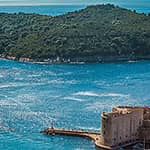
The Legend of the Lokrum Curse
This Lokrum legend is connected to the establishment of the Benedictine monastery on Lokrum Island.
Read more: The Legend of the Lokrum Curse
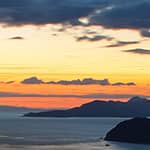
The wretched woman of Lopud
The legend of the forbidden tragic love between a nobleman and a commoner girl.
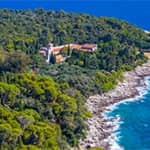
Richard the Lion-Hearted´s vow
Regarded as one of the most distinguished Renaissance playwrights and prose writers in Croatian literature.
Read more: Richard the Lion-Hearted´s vow
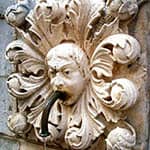
City Walls Legends and Facts Tour
Gain a genuine understanding of Dubrovnik's life across different eras through tales of legends and customs.
